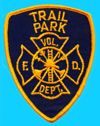Throughout the storied history of the fire service, there have been many changes and breakthroughs. The advancements in technology and improvements in personal protective equipment have saved many lives, both civilians and firefighters. But there’s another area that’s changed as well: the people. When I began my career in the fire service, the pay was much lower, the equipment was basic, and education and training was limited. While it was then considered “just a physical job,” there was still a strong sense of pride and tradition that drew all of us to it. We were eager to learn about our department and the firefighting “pioneers” who came before us.
Nowadays, young men and women starting their careers in the fire service are drawing better pay, have more advanced technology available, and have more access to higher education and training. But the one thing that seems to be missing is that sense of pride and tradition. We began to notice it in our own department when one day while working with some new recruits, we found that one of them didn’t even know our own fire chief’s name! This was unacceptable.
 |
 |
Later that year, some colleagues and I attended a “Firefighter Tradition” class presented by Chief Rick Lasky of the Lewisville (Texas) Fire Department and Glenn Corbett, a professor of fire science at John Jay College in New York City. While all of us had many years on the job, it felt like it was our first day! We came away excited and began discussing the possibility of putting together our own “tradition” program for our recruit academy. We thought of how great it would be to let the new firefighters know something about our fire department and the many people who have worked hard to make it what it is today. On our return home, we discussed the idea with our Recruit Academy captain and our division chief of training and safety. Both were very receptive and we went to work.
Our program focused on the following points: A history of our department, including how it began and where we are today, and an open discussion on the attitudes and abilities of a firefighter in today’s fire service. An outline was developed and turned into a PowerPoint presentation, including many pictures of our own people, which helped to convey our message. The message was simple: We are very proud of our fire department and we all understand that it took a lot of hard work from many people throughout the years to make it what it is today. The presentation included the following:
 PHOTOS MARK CARR AND AARON TURNER Trail Park Fire Department, pre-consolidation |
Our fire department: Then and Now
This section featured pictures of original fire stations and apparatus from the early 1940s to present day. We relayed some “old stories” that described the courage and dedication that the pioneers of our department exhibited. Because our fire department was formed in 1984 through the consolidation of several fire districts that originally began as volunteer fire departments, we covered the many changes between then and now. Those changes included the increase in population served, the increase in fire stations, personnel, and emergency responses and types, and the changes to the operating budget, including our salaries.
Attitudes and Abilities
An attitude is a powerful thing. It impacts every aspect of what we do, whether it’s interacting with others in the fire station or operating on an emergency scene. We wanted our new recruits, who some day will be fighting fire alongside us, to have a positive attitude; one that would enhance their knowledge, skills, and abilities. So we talked about some “core values” in the fire service that we felt were important: honor, such as being responsible and accountable for your actions; courage, or doing the right thing, in the right way, for the right reason; and commitment: devotion to your family, your department, the fire service, and your community. While discussing these values we showed pictures of our crews working as a team in the community, at different incidents ranging from fires to hurricanes, and living and training together at the fire station.
  (Left) Lunch with the Fire Chief Herman Brice. (Right) Firefighters work together and play together. |
 Current PBCFR fire engine |
As for abilities, well, the fire service is a dangerous profession! It demands that you stay on top of your game. We stressed that they must know every aspect of their own personal protective equipment and how to operate it in a chaotic environment. The importance of training with their crews and their own personal development was presented, including pictures depicting significant emergencies and close calls. Again, all of the pictures featured our own firefighters and incidents.
To date, several presentations have been completed and we believe it is making a difference. By simply instilling this feeling of tradition and dedication in our new recruits, we feel that we have inspired them to have pride and ownership in their fire department and their new profession. It’s our hope that they carry this dedication and commitment forward with them as they progress through their careers in the fire service.











